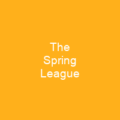Playgrounds: A Haven for Childhood Development
Imagine a place where children can run free, explore their surroundings, and develop both physically and mentally—this is the essence of a playground. Do you ever wonder how these spaces have evolved over time? From simple fields to meticulously designed areas filled with swings, slides, and climbing structures, playgrounds have come a long way.
A Historical Journey
The history of playgrounds is as fascinating as it is rich. Can you believe that evidence of children playing in streets and fields dates back to the 16th century? However, it wasn’t until the 19th century that developmental psychologists like Friedrich Fröbel started advocating for purpose-built public playgrounds. The first such playground was created in Britain in the mid-1800s, marking a significant milestone.
The Evolution of Playgrounds
In the 20th century, the concept of playgrounds transformed into something more than just a place to play. Wasn’t it revolutionary when organizations like the National Playing Fields Association promoted manufactured equipment? Meanwhile, others argued for ‘junk playgrounds’ that allowed children to play freely and creatively.
Diverse Types of Playgrounds
Today, there are numerous types of playgrounds catering to different needs. Have you ever visited a public playground installed in a park or school? These spaces provide a safe environment for children to play and develop physically and mentally. Some playgrounds, known as playscapes, offer a natural setting that encourages imaginative play.
The Importance of Free Play
Free play on playgrounds is essential for healthy development. Doesn’t it make sense that children need to be able to claim ownership and autonomy in their play areas? For many, the favorite part of the day is recess or free time on the playground, providing a release from academic pressures.
Safety and Design
Safety is paramount when it comes to playground design. Do you know that over 26,000 children’s playgrounds were in use in the UK as of 2019? Organizations like the Consumer Product Safety Commission and the American National Standards Institute have established standardized guidelines for safe playground installation and maintenance practices.
Injury Statistics
According to data, US emergency departments treat over 200,000 children under 14 for playground-related injuries each year. Is it surprising that falls to the surface are a contributing factor in 79% of all injuries? The most prevalent diagnoses include fractures and lacerations.
The Role of Regulation
Regulation plays a crucial role in ensuring playground safety. Do you know that there are specific European standards for surface requirements and material depth, as well as equipment standards? These guidelines help prevent injuries while still allowing children to take risks and develop a sense of mastery over their environment.
Inclusive Playgrounds
Inclusive playgrounds prioritize physical accessibility, age and developmental appropriateness, and sensory-stimulating activity. Aren’t these designs aimed at accommodating children with disabilities or developmental differences? Natural playgrounds combine natural materials to create complex play environments that teach children about the natural world.
The Future of Playgrounds
The future of playgrounds lies in innovation and inclusivity. Are we moving towards a place where every child can find a space that suits their needs? Collaborative community projects, public and free spaces, commercial enterprises charging entrance fees, non-profit organizations offering edutainment—these are just some of the types of playgrounds that cater to diverse communities.
Conclusion
In conclusion, playgrounds have evolved from simple outdoor spaces into complex environments designed for physical and mental development. They offer a safe haven where children can play freely, learn through experience, and develop essential skills. As we continue to innovate and improve these spaces, let us remember the importance of balance—creating environments that are both safe and stimulating.

You want to know more about Playground?
This page is based on the article Playground published in Wikipedia (retrieved on February 11, 2025) and was automatically summarized using artificial intelligence.







